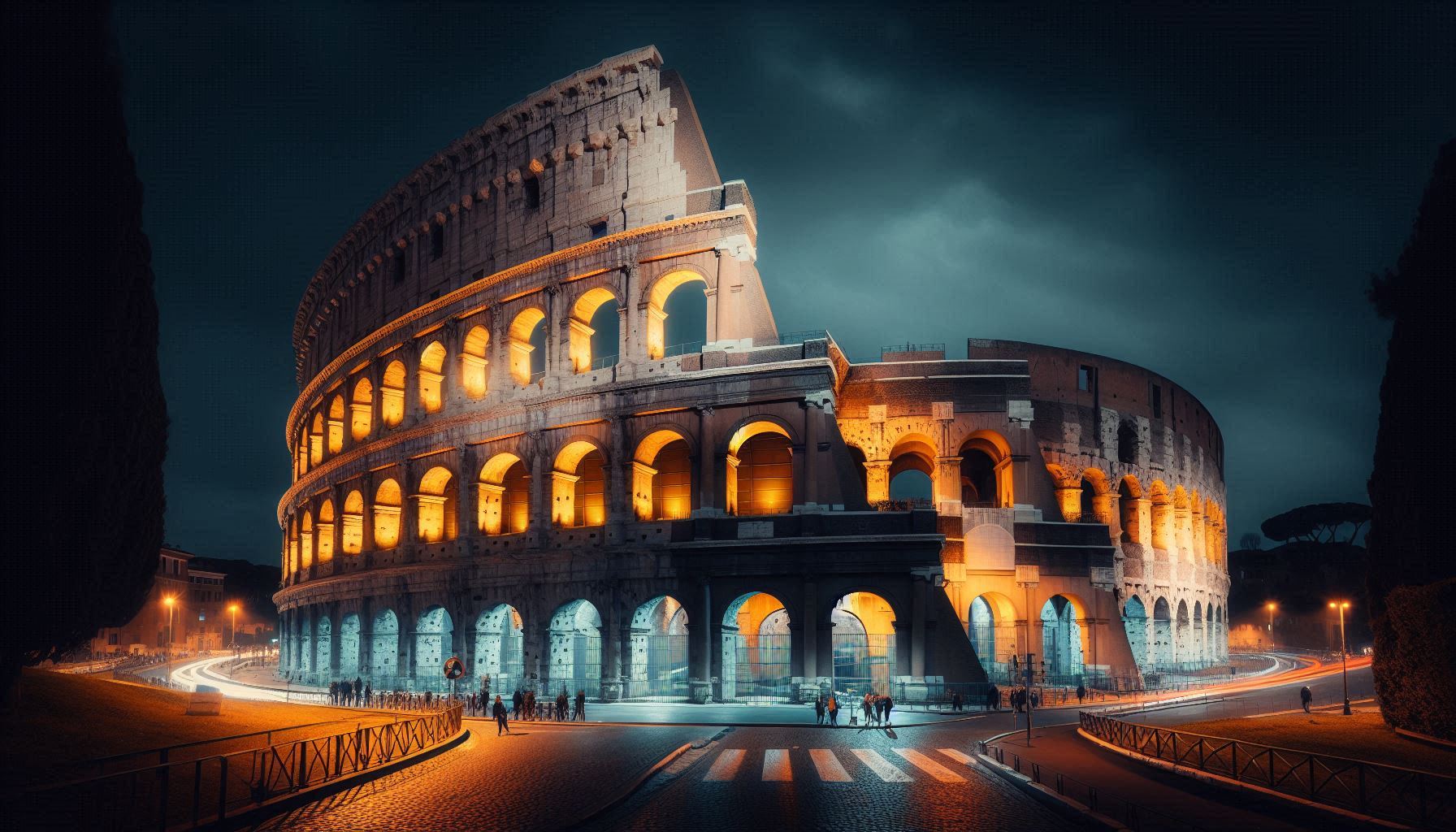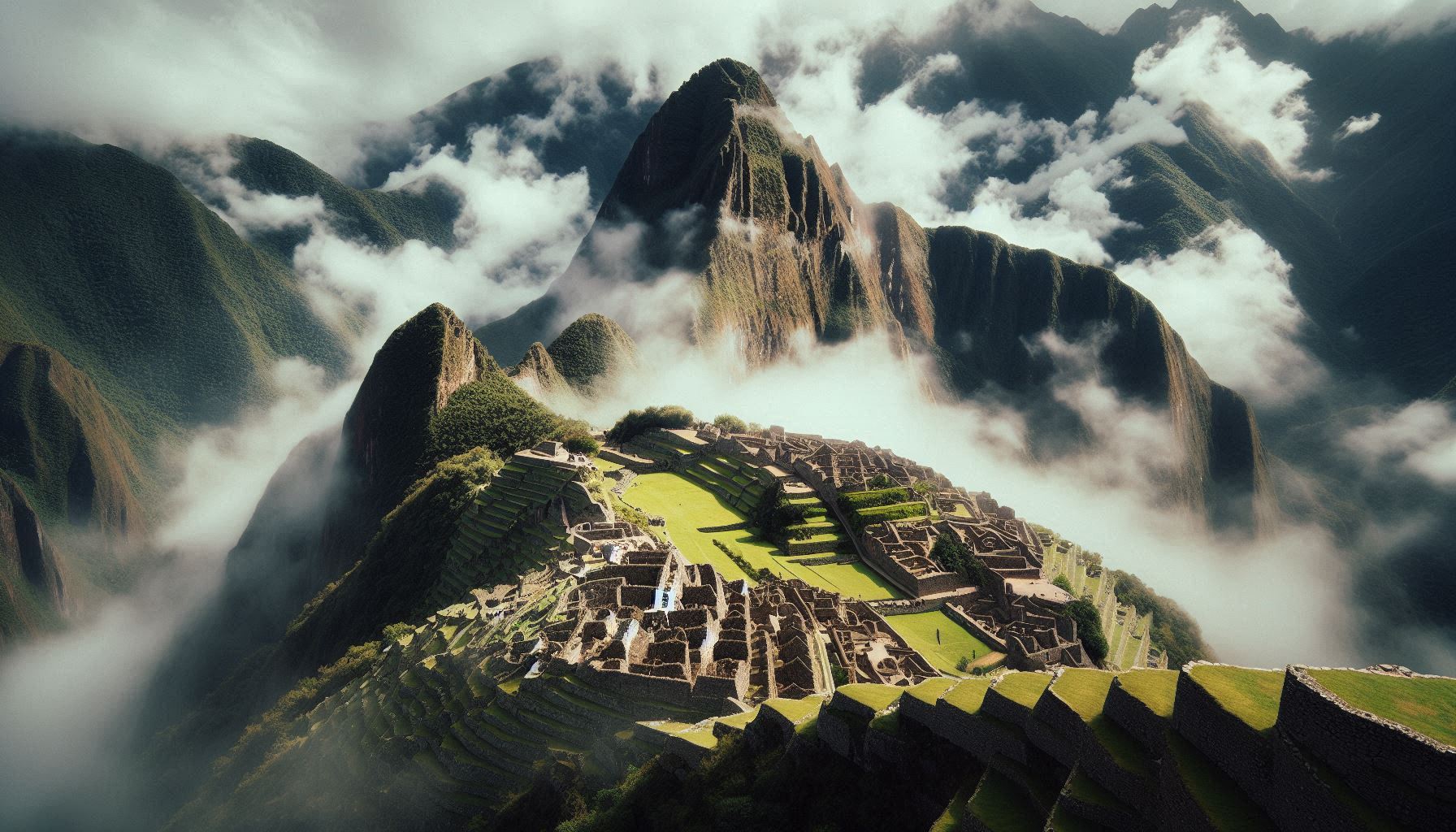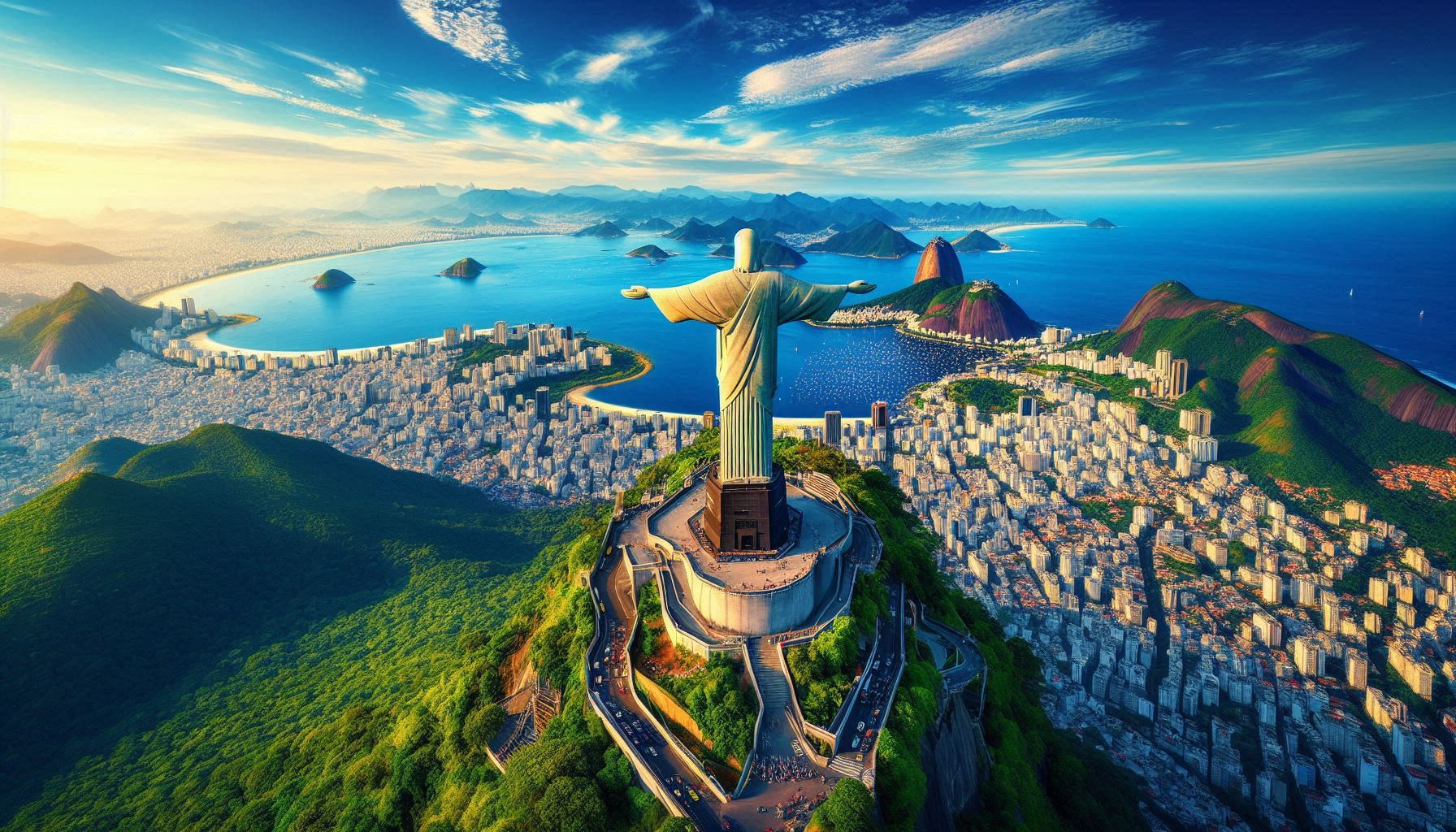From Ancient Marvels to Modern Economies: The Financial Impact of the 7 Wonders
The Magnificence of the 7 Wonders of the World and Their Economic Influence
The 7 Wonders of the World are more than just remarkable landmarks; they are symbols of human achievement and ingenuity that have captivated the imagination of people for centuries. From ancient times to the present day, these wonders have been marvels of architecture, art, and engineering. But beyond their historical and cultural significance, the 7 Wonders of the World have also played a pivotal role in shaping the economies of the regions in which they are located. This article delves into the history and cultural significance of these wonders while exploring the profound economic impact they have on their host countries.
The 7 Wonders of the Ancient World: A Glimpse into History
The original list of the 7 Wonders of the World, often referred to as the Seven Wonders of the Ancient World, was a compilation of remarkable constructions known to the ancient Greeks. These wonders were considered a testament to human creativity and were primarily located around the Mediterranean basin. Though only one of them remains standing today, their legacy continues to inspire awe and admiration.
The Great Pyramid of Giza: The Last Standing Wonder
The Great Pyramid of Giza, the only surviving wonder from the original list, is a monumental symbol of ancient Egypt’s grandeur. Constructed around 2560 BC as a tomb for Pharaoh Khufu, the pyramid was the tallest man-made structure in the world for over 3,800 years. It is a marvel of engineering, with its massive stone blocks and precise alignment with the stars.
Economic Impact: The Great Pyramid of Giza is not only a historical treasure but also a significant economic asset for Egypt. Tourism centered around the pyramids generates billions of dollars annually for the Egyptian economy. The site attracts millions of visitors each year, creating jobs in the tourism and hospitality sectors, boosting local businesses, and contributing to the country’s GDP. The preservation and promotion of the Great Pyramid continue to be a priority for Egypt, ensuring its status as a global heritage site and a key economic driver.
The Hanging Gardens of Babylon: A Lost Wonder
The Hanging Gardens of Babylon are perhaps the most mysterious of the ancient wonders, as their existence has never been definitively proven. Said to have been built by King Nebuchadnezzar II around 600 BC, these terraced gardens were described as an astonishing feat of engineering, with lush greenery cascading down the walls of the city of Babylon.
Economic Impact: Although the Hanging Gardens no longer exist, their legendary status has had a lasting impact on the cultural heritage of Iraq, the purported location of Babylon. The stories and historical significance of the gardens have influenced the development of tourism in the region. Despite the challenges faced by Iraq in modern times, the allure of its ancient history continues to attract scholars, archaeologists, and a niche segment of tourists interested in the ancient world, contributing to the local economy in small but meaningful ways.
The Statue of Zeus at Olympia: A Symbol of Greek Deity
The Statue of Zeus at Olympia, created by the renowned sculptor Phidias around 435 BC, was a colossal statue dedicated to the king of the Greek gods. The statue, made of ivory and gold, stood in the Temple of Zeus and was considered one of the most magnificent works of art in ancient Greece.
Economic Impact: While the statue no longer exists, its influence on Greek culture and the site of Olympia endures. Olympia remains a significant archaeological site, attracting tourists from around the world who are interested in Greek history and mythology. The site of the ancient Olympics, Olympia has become a major destination for cultural tourism in Greece, contributing to the local and national economy through tourism revenue, archaeological research, and cultural preservation efforts.
The Temple of Artemis at Ephesus: A Shrine to the Goddess
The Temple of Artemis at Ephesus, located in modern-day Turkey, was a grand temple dedicated to the goddess Artemis. Built and rebuilt several times, the most famous version was completed around 550 BC. The temple was renowned for its size, architectural beauty, and the wealth of art it housed.
Economic Impact: Ephesus, where the temple once stood, is one of Turkey’s most visited archaeological sites today. The remnants of the temple, along with other historical structures in Ephesus, draw millions of visitors annually. The tourism generated by Ephesus is a vital component of Turkey’s economy, particularly in the Aegean region. The site’s preservation and the ongoing archaeological work contribute to the local economy by creating jobs, supporting local businesses, and enhancing the cultural heritage of Turkey.
The Mausoleum at Halicarnassus: A Tomb of Grandeur
The Mausoleum at Halicarnassus, built around 350 BC, was a tomb constructed for Mausolus, a satrap of the Persian Empire, and his wife, Artemisia. The structure was celebrated for its monumental scale and the artistry of its sculptural decorations, which depicted scenes of Greek mythology and historical events.
Economic Impact: Today, the ancient city of Halicarnassus is known as Bodrum, a popular tourist destination in Turkey. Although the Mausoleum itself no longer stands, the site has contributed to the historical and cultural allure of Bodrum, attracting tourists interested in ancient history. The tourism industry in Bodrum, fueled by its rich history and beautiful coastal setting, is a significant contributor to the local economy, supporting hospitality, retail, and services sectors.
The Colossus of Rhodes: A Monumental Statue
The Colossus of Rhodes was a massive bronze statue of the sun god Helios, erected on the Greek island of Rhodes around 280 BC. Standing over 30 meters tall, it was one of the tallest statues of the ancient world and was considered a symbol of the island’s prosperity and strength.
Economic Impact: Although the Colossus was destroyed by an earthquake in 226 BC, its legacy continues to influence Rhodes. The island is a major tourist destination, and the myth of the Colossus contributes to its cultural and historical appeal. Tourism on Rhodes is a vital part of the local economy, with visitors drawn to the island’s rich history, beautiful beaches, and vibrant culture. The Colossus remains a symbol of the island’s past and its enduring appeal as a travel destination.
The Lighthouse of Alexandria: A Beacon of Ancient Innovation
The Lighthouse of Alexandria, also known as the Pharos of Alexandria, was constructed on the small island of Pharos around 280 BC. It was one of the tallest man-made structures in the world at the time and served as a beacon for sailors navigating the treacherous waters of the Mediterranean Sea.
Economic Impact: The Lighthouse of Alexandria no longer stands, but its influence on the city’s maritime history is still felt today. Alexandria, Egypt’s second-largest city, remains a major port and a center of economic activity. The city’s rich history, including its connection to the ancient lighthouse, attracts tourists and scholars alike. Tourism, trade, and shipping continue to be crucial components of Alexandria’s economy, with the legacy of the Lighthouse contributing to its status as a key historical and economic hub in the region.
The New 7 Wonders of the World: Modern Marvels
In 2007, a global poll organized by the New7Wonders Foundation selected a new list of wonders to represent human achievement in the modern world. These wonders, located across different continents, are celebrated for their historical, cultural, and architectural significance. They continue to captivate visitors from around the world and play a significant role in the economies of their respective countries.
The Great Wall of China: A Symbol of Strength and Endurance
The Great Wall of China, built over several dynasties and spanning more than 13,000 miles, is one of the most iconic structures in the world. Originally constructed as a defense against invasions, the Great Wall has become a symbol of China’s strength, perseverance, and architectural ingenuity.
Economic Impact: The Great Wall is one of China’s most significant tourist attractions, drawing millions of visitors each year. The revenue generated from tourism at the Great Wall contributes substantially to the local and national economy. The Wall’s preservation, maintenance, and promotion as a UNESCO World Heritage site ensure its continued appeal as a global travel destination. The tourism industry surrounding the Great Wall provides employment opportunities, supports local businesses, and plays a crucial role in regional development.

Petra: The Rose-Red City of the Nabataeans
Petra, located in modern-day Jordan, is an ancient city carved into the rose-red cliffs of the desert. Established as the capital of the Nabataean Kingdom around 300 BC, Petra is renowned for its rock-cut architecture, intricate facades, and water management systems. The city is a testament to the ingenuity of its builders and remains one of the most visited archaeological sites in the world.
Economic Impact: Petra is the crown jewel of Jordan’s tourism industry, attracting hundreds of thousands of visitors annually. The site’s designation as a UNESCO World Heritage site has helped boost its global profile, making it a key economic asset for Jordan. Tourism in Petra supports a wide range of economic activities, from hospitality and transportation to handicrafts and cultural performances. The revenue generated by Petra plays a vital role in the local economy, particularly in the surrounding region of Wadi Musa, where many residents depend on tourism for their livelihoods.

The Colosseum: Rome’s Eternal Icon
The Colosseum in Rome, Italy, is an architectural marvel that has stood the test of time. Completed in 80 AD, this massive amphitheater was the site of gladiatorial contests, public spectacles, and other forms of entertainment for the citizens of ancient Rome. The Colosseum remains one of the most recognizable landmarks in the world and a symbol of the grandeur of the Roman Empire.
Economic Impact: The Colosseum is one of Italy’s most visited tourist attractions, drawing millions of visitors each year. The revenue generated from ticket sales, guided tours, and associated tourism activities contributes significantly to Rome’s economy. The Colosseum’s status as a UNESCO World Heritage site ensures ongoing investment in its preservation and promotion. The economic impact of the Colosseum extends beyond tourism, as it also supports a range of cultural and educational initiatives that enhance Rome’s global reputation as a center of history and heritage.

Machu Picchu: The Lost City of the Incas
Machu Picchu, located high in the Andes Mountains of Peru, is an ancient Incan city that was rediscovered in 1911. Built in the 15th century, Machu Picchu is renowned for its stunning stone construction, terraced fields, and breathtaking mountain scenery. It is one of the most iconic archaeological sites in the world and a symbol of the Inca civilization.
Economic Impact: Machu Picchu is the most visited tourist destination in Peru, attracting millions of tourists annually. The site’s status as a UNESCO World Heritage site has helped to preserve its cultural and historical significance, while also boosting Peru’s tourism industry. The economic impact of Machu Picchu is felt across the country, as tourism generates revenue, creates jobs, and supports local businesses. The influx of visitors to Machu Picchu has also spurred infrastructure development in the surrounding regions, further contributing to the economy.

Chichen Itza: The Heart of Mayan Civilization
Chichen Itza, located in the Yucatan Peninsula of Mexico, is a significant archaeological site that was once a major center of the Mayan civilization. The site is famous for its iconic pyramid, El Castillo, which was used for astronomical and ceremonial purposes. Chichen Itza is a testament to the advanced knowledge and artistic achievements of the Mayan people.
Economic Impact: Chichen Itza is one of Mexico’s most visited tourist attractions, with millions of visitors flocking to the site each year. The revenue generated from tourism at Chichen Itza plays a crucial role in the local and national economy. The site has spurred the development of tourism-related infrastructure, including hotels, restaurants, and transportation services, which provide employment opportunities and support the local economy. The preservation of Chichen Itza as a UNESCO World Heritage site ensures its continued appeal as a cultural and historical destination, attracting visitors from around the world.

The Taj Mahal: A Monument of Love and Beauty
The Taj Mahal, located in Agra, India, is one of the most beautiful and iconic buildings in the world. Built by Emperor Shah Jahan in memory of his beloved wife Mumtaz Mahal, the Taj Mahal is a masterpiece of Mughal architecture, combining elements of Islamic, Persian, and Indian design. The white marble mausoleum is renowned for its intricate carvings, stunning symmetry, and beautiful gardens.
Economic Impact: The Taj Mahal is India’s most visited tourist attraction, drawing millions of visitors from around the world. The revenue generated from tourism at the Taj Mahal is a significant contributor to India’s economy, particularly in the state of Uttar Pradesh. The site supports a wide range of economic activities, including hospitality, transportation, and handicrafts. The preservation and promotion of the Taj Mahal as a UNESCO World Heritage site ensure its continued appeal as a global travel destination. The economic impact of the Taj Mahal extends beyond tourism, as it also plays a role in India’s cultural diplomacy and global image.

Christ the Redeemer: A Symbol of Faith and Unity
Christ the Redeemer is a towering statue of Jesus Christ that stands atop the Corcovado Mountain in Rio de Janeiro, Brazil. Completed in 1931, the statue is one of the most recognizable landmarks in the world and a symbol of Christianity. The statue’s outstretched arms welcome visitors to Rio de Janeiro and serve as a reminder of the city’s rich cultural and religious heritage.
Economic Impact: Christ the Redeemer is one of Brazil’s most visited tourist attractions, drawing millions of visitors each year. The revenue generated from tourism at the site contributes significantly to the local and national economy. The statue’s status as a UNESCO World Heritage site ensures ongoing investment in its preservation and promotion. The economic impact of Christ the Redeemer extends beyond tourism, as it also supports a range of cultural and educational initiatives that enhance Rio de Janeiro’s global reputation as a center of culture and heritage.

The Broader Economic Impact of the 7 Wonders of the World
The 7 Wonders of the World, both ancient and modern, have a profound impact on the economies of their host countries. These iconic landmarks attract millions of tourists each year, generating billions of dollars in revenue and supporting a wide range of economic activities. The tourism industry surrounding these wonders creates jobs, boosts local businesses, and contributes to infrastructure development.
In addition to their direct economic impact, the 7 Wonders of the World also play a significant role in cultural diplomacy and global image-building. Countries that are home to these wonders often use them as symbols of national pride and identity, promoting them on the international stage to attract investment and tourism. The preservation and promotion of these sites are also essential for maintaining their economic value, ensuring that they continue to draw visitors and generate revenue for years to come.
Moreover, the 7 Wonders of the World contribute to the cultural and educational enrichment of the global community. They serve as sources of inspiration, knowledge, and creativity, fostering a deeper understanding of history, architecture, and human achievement. The economic impact of these wonders extends beyond tourism, as they also play a role in research, education, and cultural exchange.
Challenges and Opportunities for Sustainable Tourism
While the economic benefits of the 7 Wonders of the World are significant, there are also challenges associated with managing tourism at these sites. Overcrowding, environmental degradation, and the impact on local communities are some of the issues that need to be addressed to ensure the long-term sustainability of these wonders.
Overcrowding and Its Impact on Local Communities
One of the major challenges facing the 7 Wonders of the World is overcrowding. The sheer number of visitors to these sites can put a strain on local infrastructure, leading to congestion, pollution, and damage to the sites themselves. Overcrowding can also have a negative impact on local communities, as the influx of tourists can drive up prices, displace residents, and disrupt traditional ways of life.
To address these challenges, it is essential to implement sustainable tourism practices that balance the needs of visitors with the preservation of the sites and the well-being of local communities. This may include measures such as limiting the number of visitors, improving infrastructure, and promoting responsible tourism practices.
Environmental Conservation and Preservation
The preservation of the 7 Wonders of the World is crucial for maintaining their economic value and cultural significance. However, the impact of tourism on the environment can be detrimental if not properly managed. The erosion of natural landscapes, the depletion of resources, and the pollution caused by tourism can all threaten the long-term sustainability of these sites.
To mitigate these impacts, it is important to implement environmental conservation measures, such as reducing waste, conserving water and energy, and protecting natural habitats. The use of eco-friendly technologies and practices can also help to minimize the environmental footprint of tourism at these sites.
Opportunities for Community Engagement and Development
The economic benefits of tourism at the 7 Wonders of the World can be maximized by engaging local communities in the development and management of these sites. By involving local residents in tourism activities, such as guiding, hospitality, and handicrafts, it is possible to create sustainable livelihoods and enhance the economic impact of tourism.
Community engagement also helps to ensure that the benefits of tourism are shared equitably and that the cultural heritage of the sites is preserved. By promoting cultural exchange and understanding, tourism can contribute to the social and economic development of local communities.
The Future of the 7 Wonders of the World
The 7 Wonders of the World will continue to captivate and inspire people for generations to come. However, the future of these wonders depends on our ability to manage tourism sustainably, preserve their cultural and environmental significance, and ensure that the economic benefits are shared equitably.
As we look to the future, it is essential to continue investing in the preservation and promotion of these wonders, while also addressing the challenges associated with tourism. By doing so, we can ensure that the 7 Wonders of the World remain iconic symbols of human achievement and continue to contribute to the economic and cultural enrichment of the global community.
Conclusion: The 7 Wonders of the World—A Legacy of Human Achievement
The 7 Wonders of the World are not just architectural and cultural marvels; they are also powerful economic engines that contribute to the prosperity of their host countries. From the ancient wonders that have left an indelible mark on history to the modern wonders that continue to inspire awe, these sites are testaments to the ingenuity and creativity of humanity.
The economic impact of the 7 Wonders of the World extends far beyond tourism, influencing cultural diplomacy, education, and global heritage. As we strive to preserve these wonders for future generations, it is essential to balance economic development with environmental conservation and social responsibility. By doing so, we can ensure that the 7 Wonders of the World continue to shine as beacons of human achievement and contribute to the well-being of people around the world.
